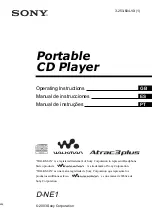
272
Copyright © Acronis, Inc., 2000-2010
If there is some data on the disk that was chosen as the target, the user will receive a warning: “
The
selected target disk is not empty. The data on its volumes will be overwritten.
”, meaning that all
the data currently located on the chosen target disk will be lost irrevocably.
Cloning method and advanced options
The
Clone basic disk
operation usually means that the information from the source disk is
transferred to the target “
As is
”. So, if the destination disk is the same size and even if it is larger, it is
possible to transfer all the information there exactly as it is stored at the source.
But with the wide range of available hardware it is normal that the target disk would differ in size
from the source. If the destination is larger, then it would be advisable to resize the source disk
volumes to avoid leaving unallocated space on the target disk by selecting the
Proportionally resize
volumes
option. The option to
Clone basic disk
“as is” remains, but the default method of cloning
will be carried out with proportional enlargement of all the
source
disk volumes so that no
unallocated space remains on the
target
disk .
If the destination is smaller, then the
As is
option of cloning will be unavailable and proportional
resizing of the
source
disk volumes will be mandatory. The program analyzes the
target
disk to
establish whether its size will be sufficient to hold all the data from the
source
disk without any loss.
If such transfer with proportional resizing of the
source
disk volumes is possible, but without any
data loss , then the user will be allowed to proceed. If due to the size limitations safe transfer of all
the
source
disk data to the
target
disk is impossible even with the proportional resizing of the
volumes, then the
Clone basic disk
operation will be impossible and the user will not be able to
continue.
If you are about to clone a disk comprising of a
system volume
, pay attention to the
Advanced
options
.
By clicking
Finish
, you'll add the pending operation of the disk cloning.
(To finish the added operation you will have to commit (p. 282) it. Exiting the program without
committing the pending operations will effectively cancel them.)
Using advanced options
When cloning a disk comprising of a
system volume
, you need to retain an operating system
bootability on the target disk volume. It means that the operating system must have the system
volume information (e.g. volume letter) matched with the disk NT signature, which is kept in the
MBR disk record. But two disks with the same NT signature cannot work properly under one
operating system.
If there are two disks having the same NT signature and comprising of a system volume on a machine, at the
startup the operating system runs from the first disk, discovers the same signature on the second one,
automatically generates a new unique NT signature and assigns it to the second disk. As a result, all the
volumes on the second disk will lose their letters, all paths will be invalid on the disk, and programs won't find
their files. The operating system on that disk will be unbootable.
You have the following two alternatives to retain system bootability on the target disk volume:
1.
Copy NT signature – to provide the target disk with the source disk NT signature matched with
the Registry keys also copied on the target disk.
2.
Leave NT signature – to keep the old target disk signature and update the operating system
according to the signature.
















































